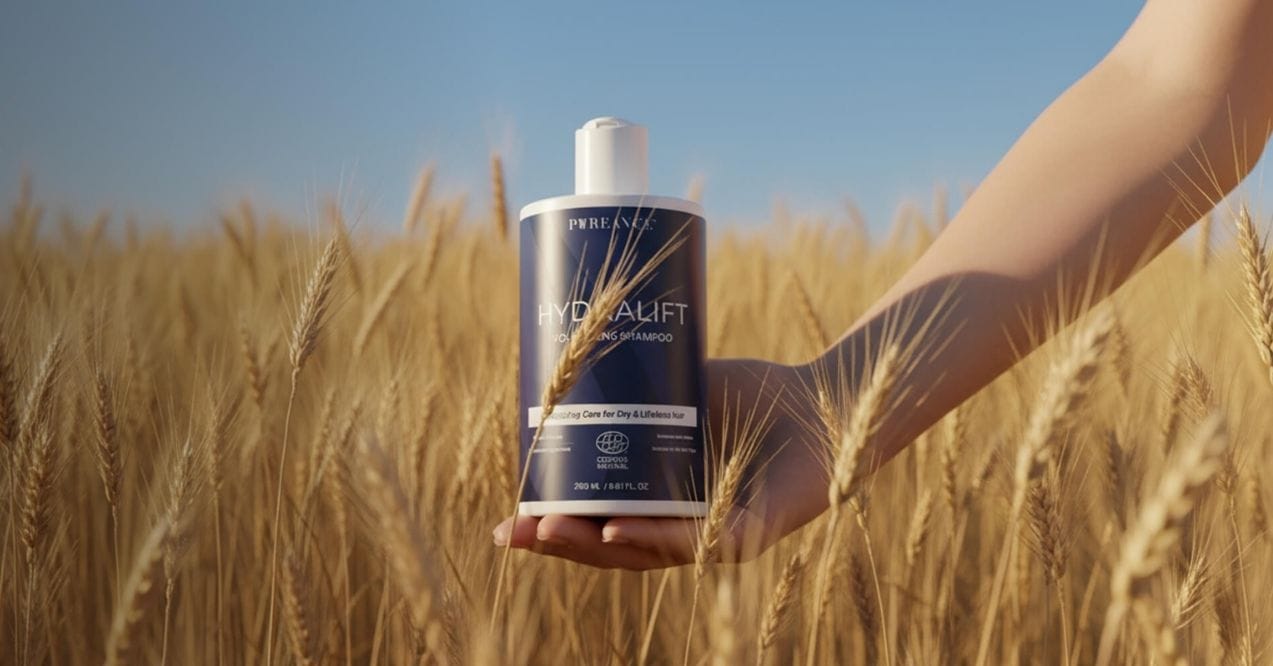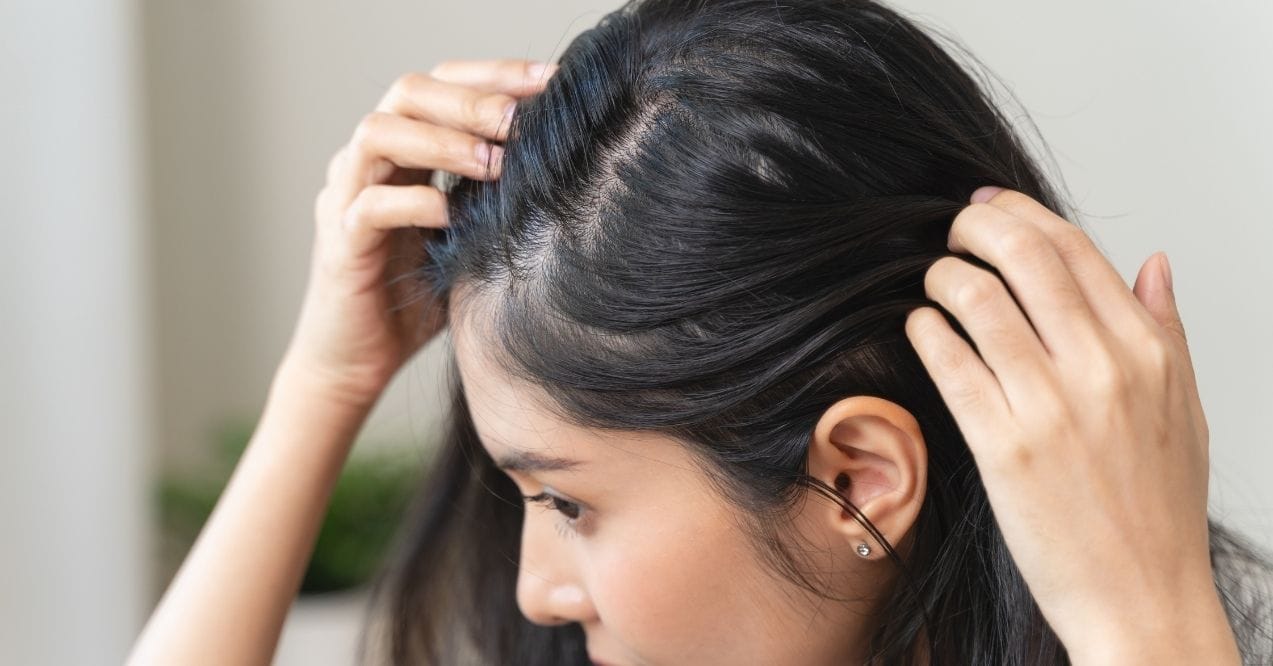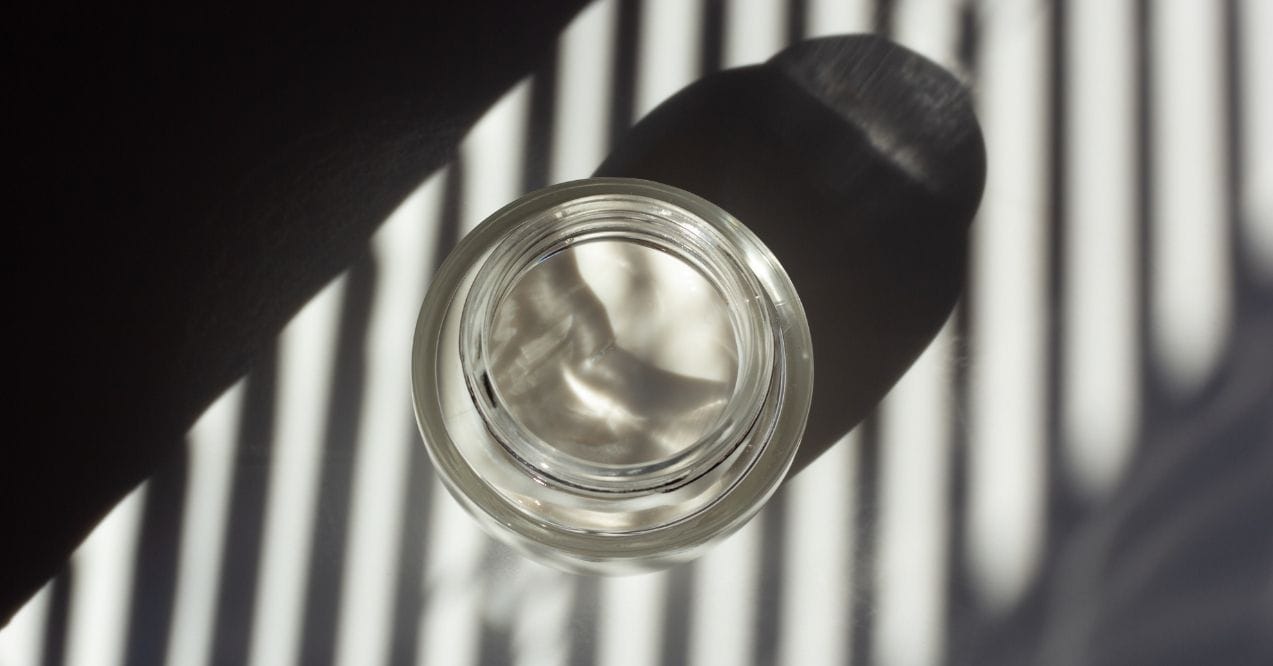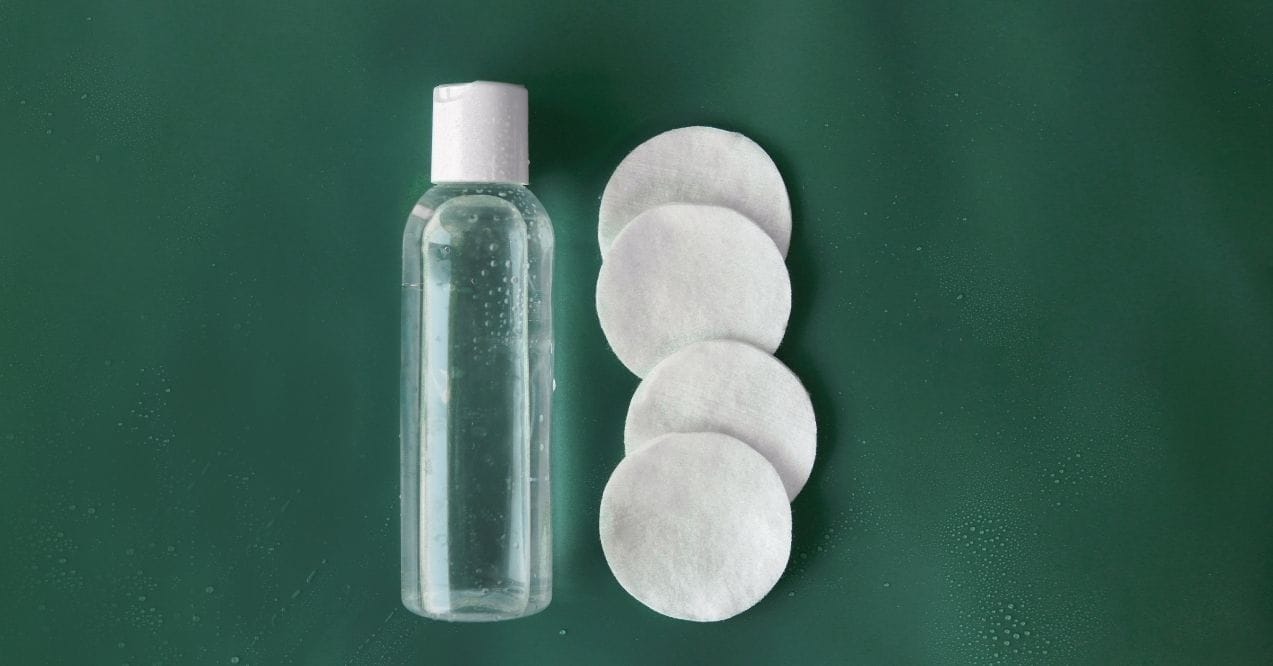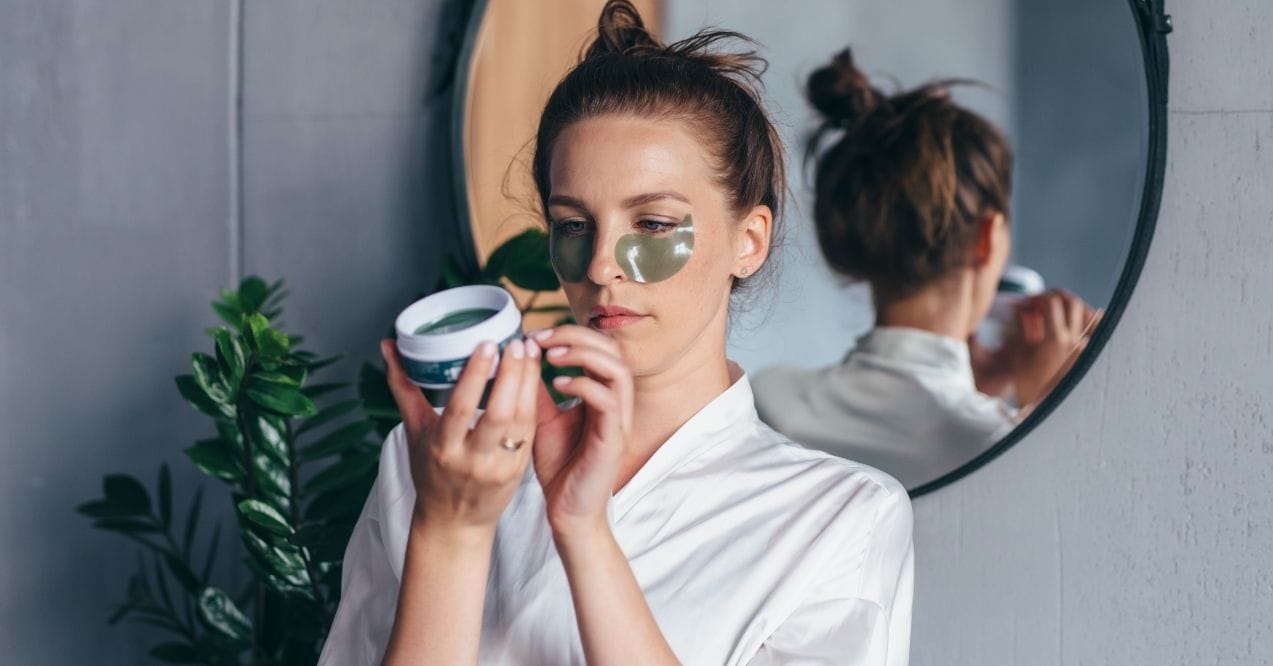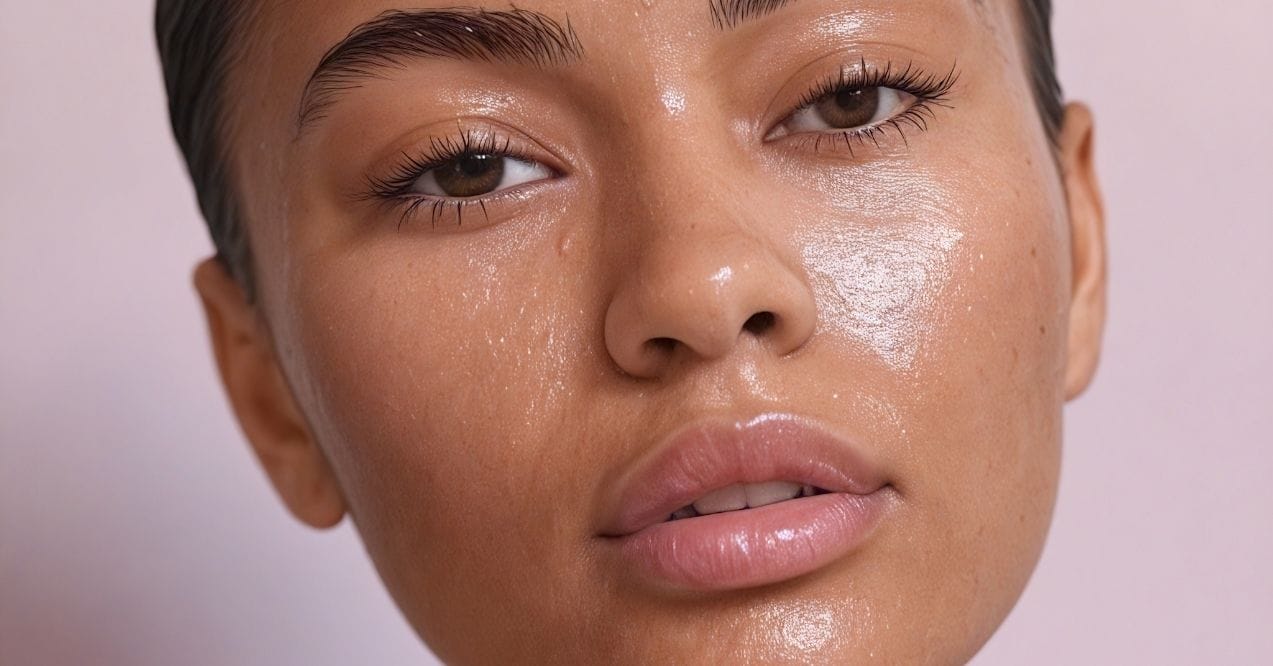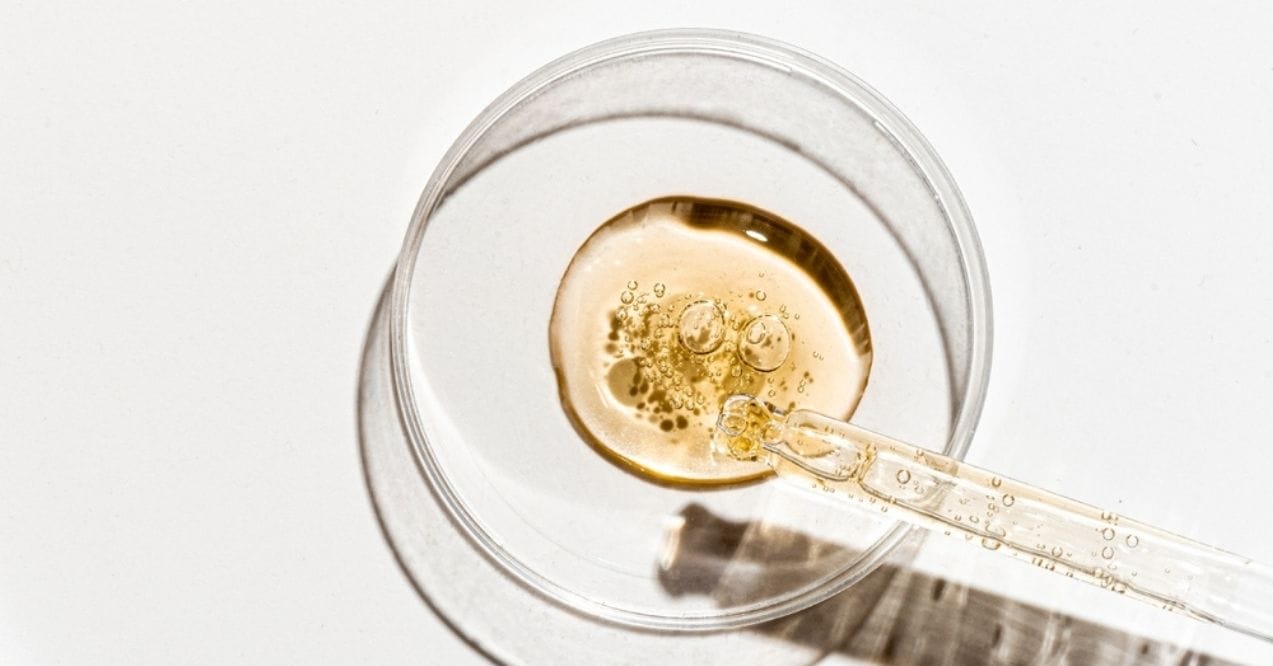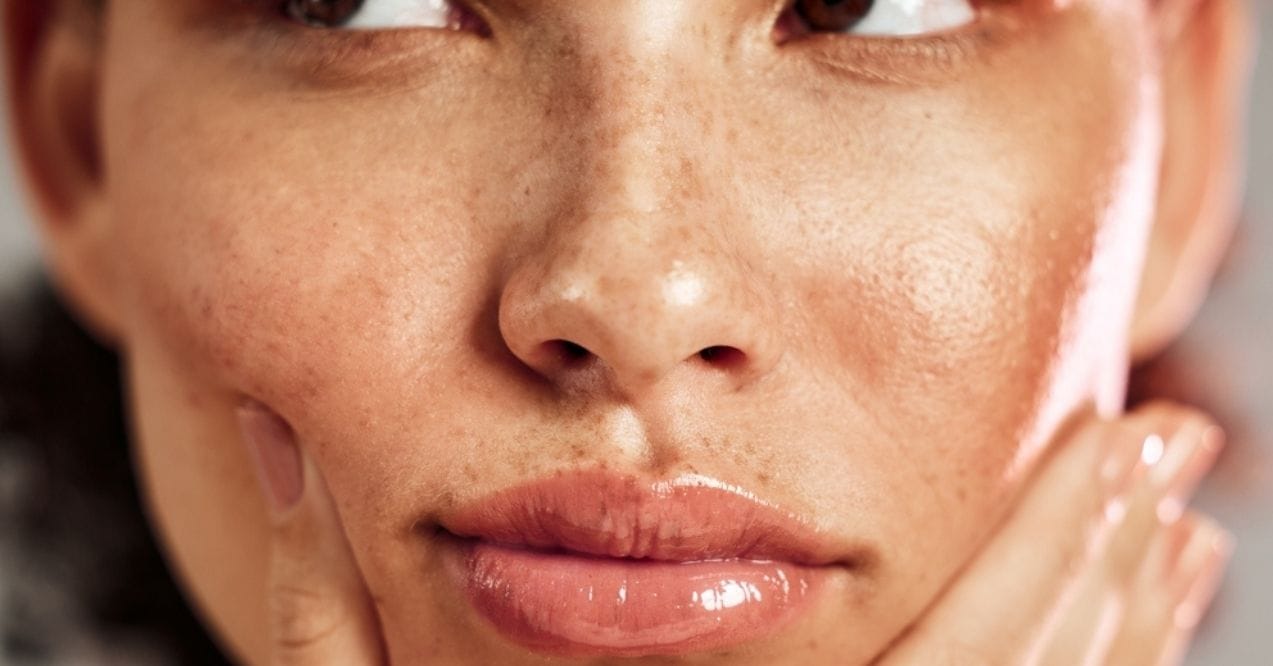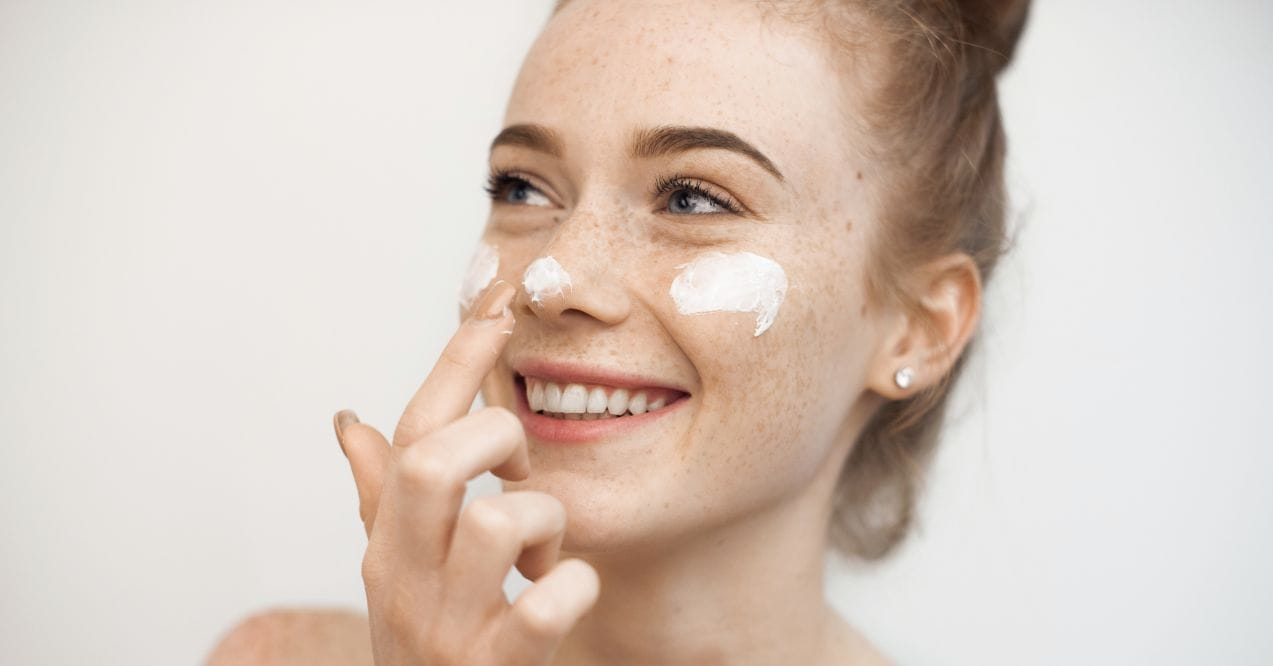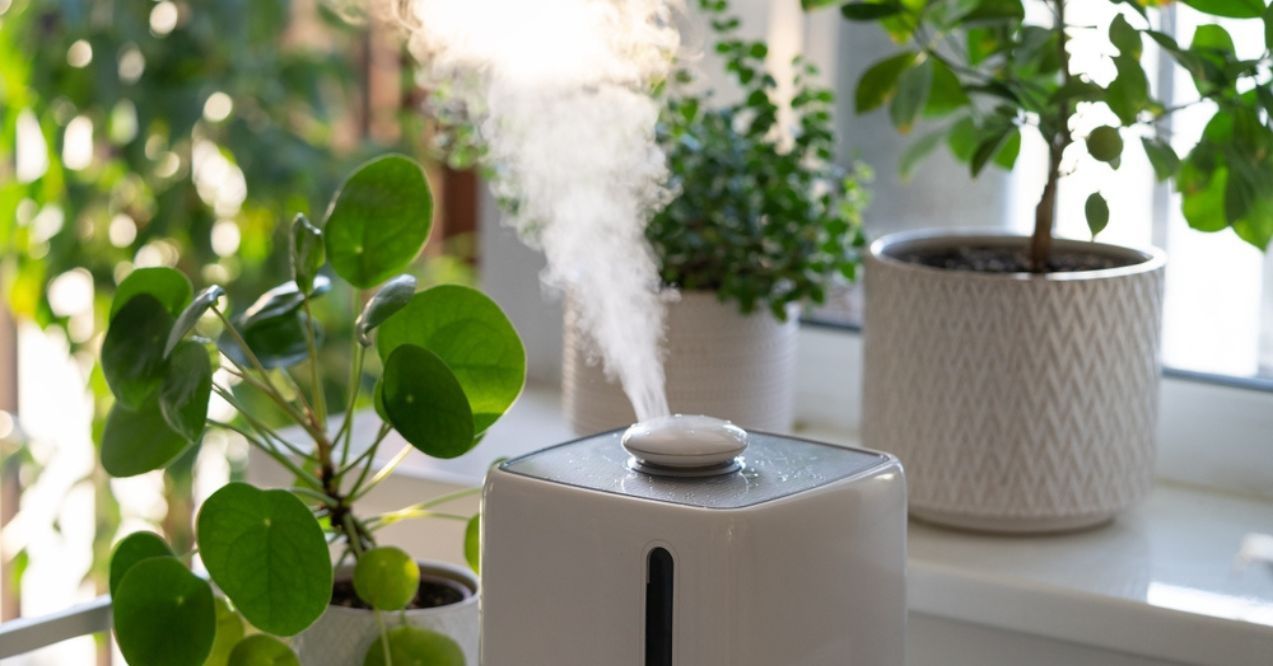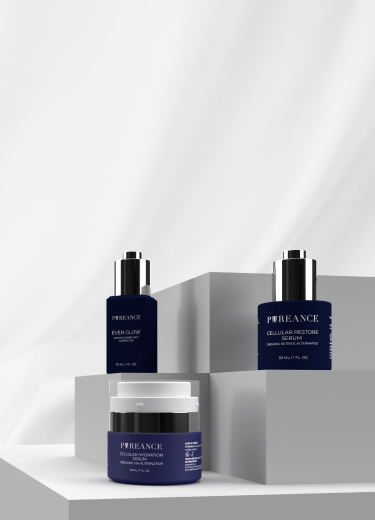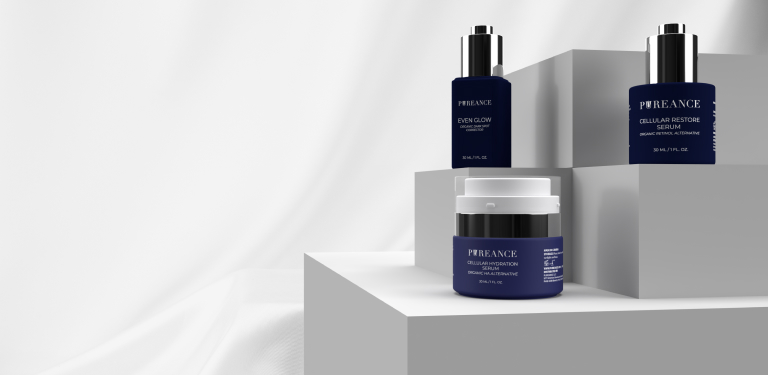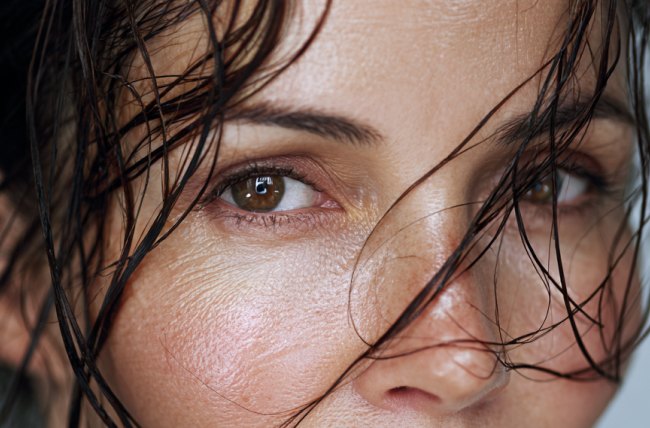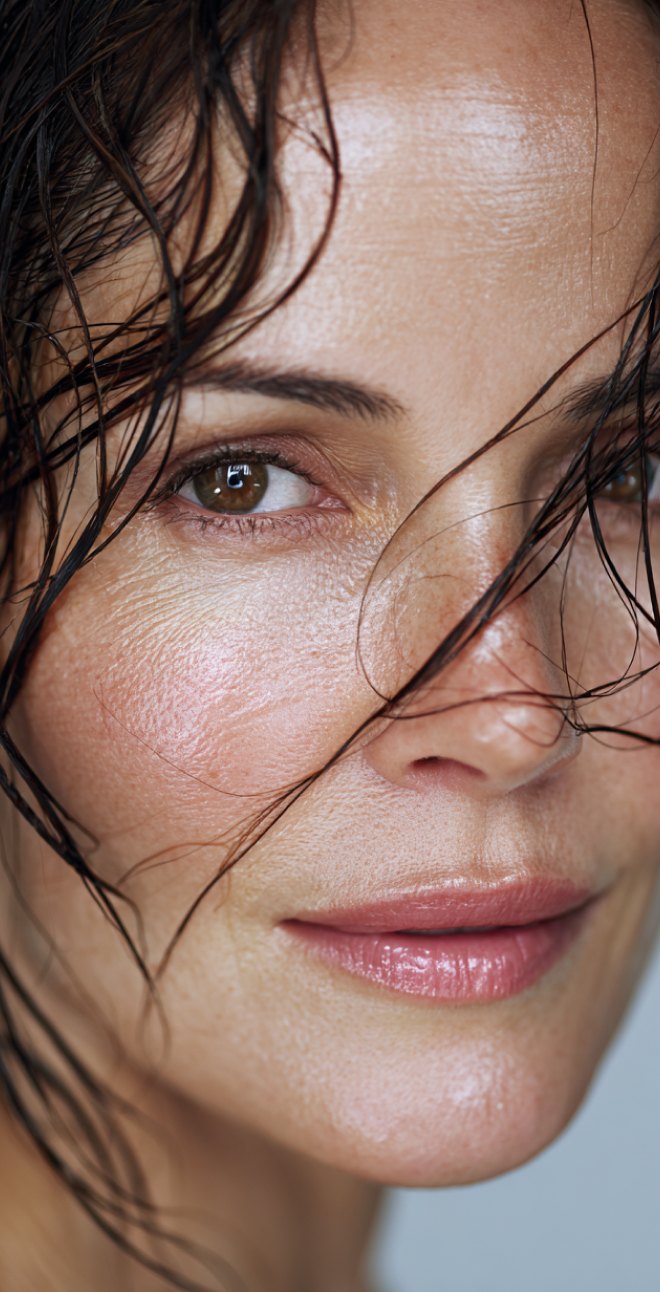


How to Restore Collagen in the Face
Your skin’s firmness isn’t something you think about until it changes. That bounce-back quality you once took for granted starts to fade. Fine lines appear where your skin once looked smooth, and you might notice your face losing some of its lifted appearance.
This happens because collagen (the protein that gives skin its structure) naturally declines over time. The drop accelerates after significant hormonal shifts, which is why many women notice changes they hadn’t seen before. Learning how to restore collagen in the face can help you work with your skin’s changing needs rather than against them.
You have more control than you might expect. From what you eat to how you care for your skin, daily choices can influence how your face looks and feels. Let’s explore what actually works.
Key Article Findings
- Collagen gives skin its firmness, but production slows as hormones shift and time passes.
- Diet, skincare, and lifestyle habits directly affect how well your skin maintains its structure.
- Both at-home practices and professional treatments can help encourage collagen renewal.
- Results take time (usually weeks to months) so consistency matters more than quick fixes.
Collagen Loss in the Face
Collagen works like scaffolding beneath your skin. This structural protein keeps everything firm and lifted. When collagen levels drop, that scaffolding weakens, and your skin shows it.
Your body makes less collagen as you get older. The collagen you still have also breaks down faster than it rebuilds. This creates a gap between what your skin needs and what your body provides.
Hormonal changes play a major role too. When estrogen levels shift, collagen production can drop significantly. This explains why skin changes can feel sudden rather than gradual. Learning how to stimulate collagen production in skin helps you take targeted action.
Signs of Collagen Loss in the Face
You might notice fine lines forming around your eyes and mouth first. Your skin may feel thinner or more delicate than before. Areas that once looked full (like your cheeks) might start to sag slightly.
Healing takes longer when collagen drops. A scratch or blemish that once disappeared quickly now lingers. Your skin may also feel drier, even with moisturizer, because collagen helps hold water in place.
These signs of collagen loss in face tissue become more visible during hormonal transitions. Paying attention to these changes helps you address them early.
Causes of Collagen Decline
Age isn’t the only factor in collagen loss. UV exposure damages collagen fibers and stops your skin from repairing itself properly. Even brief sun exposure adds up over years.
Sugar accelerates collagen breakdown through a process called glycation. High blood sugar causes proteins to stiffen and become brittle. Smoking constricts blood vessels, starving your skin of oxygen it needs to make new collagen.
Stress raises cortisol, which interferes with collagen production. Poor sleep has the same effect since your body repairs itself overnight. Hormonal changes, especially around menopause, can cause collagen loss in face tissue faster than other factors combined.
How to Restore Collagen in the Face
Rebuilding collagen requires a multi-angle approach. You need to address what you eat, how you treat your skin, and which habits drain your collagen reserves.
The question “can collagen be restored” has a nuanced answer: yes, but not to teenage levels. You can significantly improve your skin’s appearance and slow further decline. Setting realistic expectations helps you stay consistent with whatever approach you choose.
Lifestyle & Diet Solutions
What you eat directly affects your skin‘s ability to rebuild. Your body needs specific building blocks to make collagen. Without them, even the best skincare falls short.
Daily habits matter as much as what you apply to your face. Small changes add up when you stick with them. Think of these as the foundation for everything else you do.
1. Eat a Collagen-Boosting Diet
Your body makes collagen from amino acids found in protein. Chicken, fish, eggs, and beans all provide these building blocks. Lentils and tofu work well if you avoid animal products.
Vitamin C is non-negotiable for collagen production. Your body can’t make collagen without it. Citrus fruits, bell peppers, and leafy greens deliver high amounts.
Berries and tomatoes provide antioxidants that protect existing collagen. Healthy fats from avocados and olive oil help your skin absorb these nutrients. Bone broth contains collagen peptides that may support your skin’s repair process.
2. Stay Consistently Hydrated
Water plumps your skin from within. Dehydrated skin shows fine lines more prominently. Drinking enough water also helps your body move nutrients where they’re needed.
Aim for steady hydration throughout the day. Chugging water before bed doesn’t help as much as sipping regularly. Your skin cells need consistent moisture to function properly.
Herbal teas count toward your fluid intake. Just watch the caffeine, which can have a mild dehydrating effect if you overdo it.
3. Avoid Smoking and Excess Sugar
Smoking damages collagen in multiple ways. It reduces blood flow to your skin and introduces toxins that break down collagen fibers. Even secondhand smoke affects your skin’s health.
Sugar binds to collagen and makes it stiff. This process, called glycation, creates advanced glycation end products that accelerate aging. Cutting back on sugar helps existing collagen stay flexible and functional.
You don’t need to eliminate sugar completely. Reducing added sugars in processed foods makes the biggest difference. Fresh fruit contains sugar but also provides vitamins that help collagen production.
4. Protect Your Skin from the Sun Daily
UV rays break down collagen faster than almost anything else. Even cloudy days allow UV penetration. Daily SPF prevents this damage from accumulating.
Choose a broad-spectrum sunscreen with SPF 30 or higher. Apply it every morning, even when you’re staying inside. Windows don’t block all UV rays.
Reapply every two hours if you’re outdoors. Protective clothing and hats add extra defense. This one habit preserves more collagen than most expensive treatments.
Skincare & Topical Treatments
What you put on your skin matters as much as what you eat. Certain ingredients send signals that tell your skin to make more collagen. Others protect what you already have.
Not every product works for every skin type. Start with one or two proven ingredients. You can always add more later as your skin adjusts.
5. Use Vitamin C Serums
Topical vitamin C directly stimulates collagen production in your skin. It also protects against free radical damage from pollution and sun exposure. Look for L-ascorbic acid or sodium ascorbyl phosphate in the ingredient list.
Vitamin C serums work best when applied to clean skin in the morning. Follow with moisturizer and SPF. The benefits of vitamin C serum go beyond collagen—it brightens skin tone and fades dark spots too.
Store your vitamin C serum away from light and heat. These ingredients break down when exposed to air or sun. Brown or orange liquid means it’s oxidized and won’t work anymore.
6. Apply Retinoids or Gentle Alternatives
Retinoids are proven collagen builders. They speed up cell turnover and signal your skin to make fresh collagen. Prescription retinoids work fastest, but over-the-counter retinol still delivers results.
Start slowly with retinoids—twice a week at first. Your skin needs time to adjust without irritation. Gradually increase to nightly use as tolerated.
Bakuchiol offers a gentler option for sensitive or mature skin. This plant-based ingredient may provide similar benefits without the irritation that retinoids sometimes cause. Natural retinol alternatives for skin work well if traditional retinoids feel too harsh.
7. Add Peptide or Collagen-Infused Creams
Peptides are short chains of amino acids. They act like messengers, telling your skin to produce more collagen. Look for products containing palmitoyl pentapeptide or copper peptides.
Apply peptide serums or creams after cleansing but before moisturizer. They work best on slightly damp skin. Consistent use over several weeks yields the most noticeable results.
Collagen creams provide surface moisture but don’t penetrate deeply. They can’t replace lost collagen on their own. Think of them as helpful additions rather than miracle solutions.
At-Home Practices That Support Collagen
Beyond products, certain practices may help your skin function better. These techniques work by improving circulation or gently stimulating your skin’s repair response. They’re low-risk ways to complement your skincare routine.
Consistency matters more than intensity with these methods. Gentle, regular practice beats aggressive, occasional treatment. You’re working with your skin, not forcing it to change.
8. Incorporate Facial Massage or Gua Sha
Facial massage increases blood flow to your skin. Better circulation delivers more oxygen and nutrients to collagen-producing cells. Even five minutes daily can make a difference.
Use upward strokes when massaging your face. This helps drain lymphatic fluid and reduces puffiness. Apply gentle pressure—you’re not trying to knead dough.
Gua sha tools offer a structured way to massage your face. The smooth stone glides across skin when used with facial oil. If you’re curious about tools that work, face rollers provide similar circulation benefits with an easier learning curve.
9. Try Red Light Therapy at Home
Red light devices emit wavelengths that penetrate your skin. These wavelengths may stimulate cells to produce more collagen. At-home masks and panels have become more accessible and affordable.
Use red light therapy consistently for best results. Most devices require 10-20 minute sessions several times weekly. You won’t see overnight changes—this is a long-term investment.
Studies suggest light therapy may improve skin texture and reduce fine lines. Results typically appear after 8-12 weeks of regular use. Make sure to follow your device’s specific instructions for safety.
Professional Treatments to Rebuild Collagen
Sometimes at-home care needs professional backup. In-office treatments can jumpstart collagen production in ways topical products can’t. These procedures range from minimally invasive to more involved.
Professional treatments work best when combined with solid home care. Think of them as catalysts that accelerate what you’re already doing. They’re not required, but they can speed up visible results.
10. Microneedling and Chemical Peels
Microneedling creates controlled micro-injuries in your skin. Your body responds by producing new collagen to repair these tiny wounds. The procedure uses a device with fine needles that puncture the skin’s surface.
Results appear gradually over several weeks. Most people need multiple sessions spaced 4-6 weeks apart. Temporary redness and sensitivity are normal side effects.
Chemical peels use acids to remove damaged surface layers. This triggers your skin to regenerate with fresh collagen. Peels range from light to deep, depending on your needs and downtime tolerance.
11. Laser Therapy & Dermal Fillers
Laser treatments target deeper skin layers with controlled heat. This heat triggers collagen remodeling without damaging the surface. Different laser types work for different skin concerns and tones.
Recovery time varies by laser intensity. Some treatments require no downtime while others need several days. Multiple sessions usually produce better results than one aggressive treatment.
Dermal fillers do more than add volume. Many modern fillers stimulate your body to produce new collagen around the injection site. Results last months to years depending on the filler type used.
Supplements That Support Collagen Restoration
Internal support complements what you do externally. Certain supplements provide the raw materials your body needs to make collagen. Others protect existing collagen from breaking down.
Quality matters with supplements. Look for third-party testing and clear ingredient lists. Not all collagen products are equally effective or pure.
Collagen Peptides and Hydrolyzed Collagen
Collagen peptides are broken-down collagen proteins. Your body can absorb them more easily than whole collagen. These supplements provide amino acids that serve as building blocks.
Marine collagen comes from fish and contains primarily Type I collagen. This type makes up most of your skin’s structure. Bovine collagen from cows offers a mix of Type I and III.
Key Vitamins & Minerals for Stronger Skin
- Vitamin C remains essential for collagen synthesis. Your body literally cannot make collagen without adequate vitamin C. Supplementing ensures you’re never deficient.
- Zinc plays a role in collagen production and wound healing. Copper helps collagen fibers cross-link and become stronger. Both minerals work together to maintain skin structure.
- Biotin, often called the “beauty vitamin,” supports overall skin health. While it doesn’t directly create collagen, it helps maintain the skin barrier.
Pureance’s Hair, Skin & Nails supplements combines biotin, collagen, and essential nutrients that may help maintain firmness and elasticity. Each carefully selected ingredient works to support your skin’s natural structure.
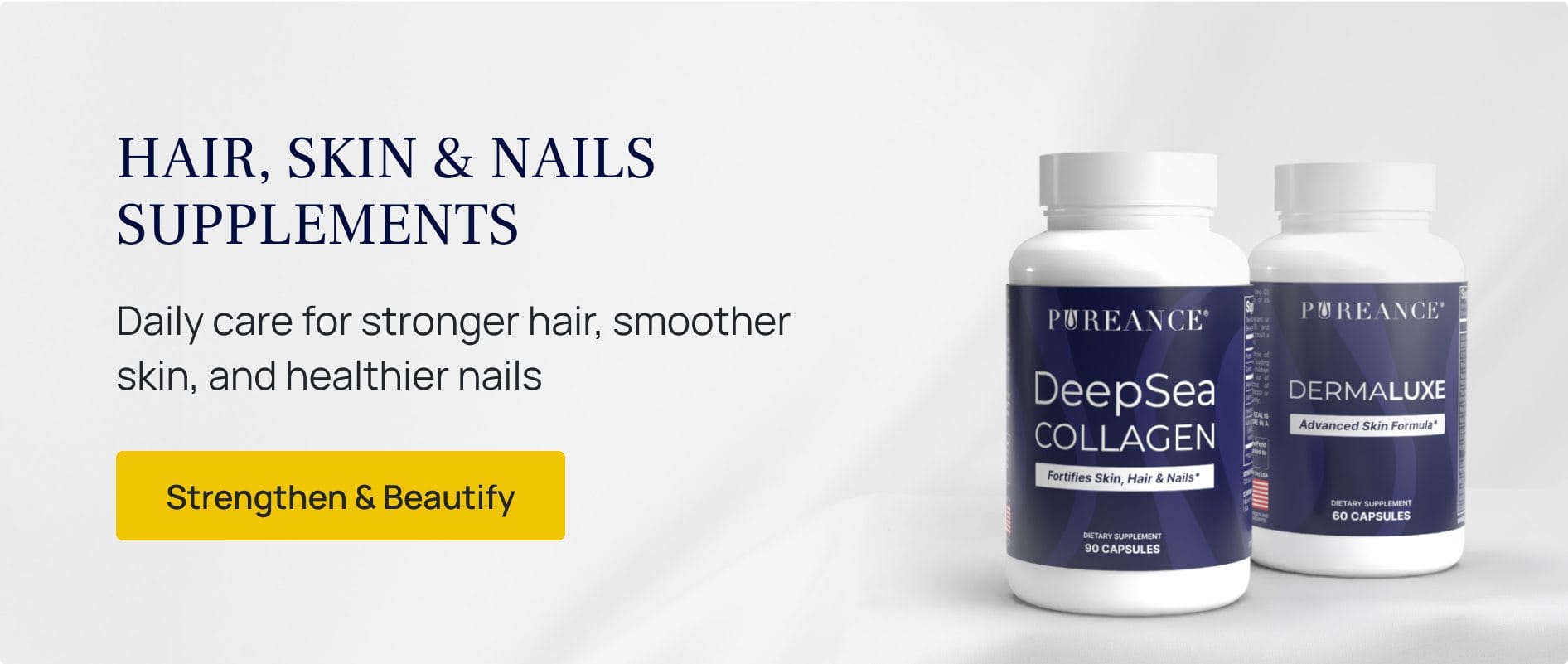
How to Create a Collagen-Friendly Routine
Building a sustainable routine helps more than random efforts. Structure makes it easier to stay consistent. Here’s how to organize your collagen-building habits into daily and weekly practices.
- Morning – Apply vitamin C serum, then moisturizer, then SPF 30+. Drink water with breakfast. Eat protein and vitamin C-rich foods.
- Evening – Cleanse gently, apply retinoid or peptide serum, follow with moisturizer. Take collagen supplement if using one. Aim for 7-9 hours of sleep.
- Weekly – Practice facial massage or gua sha 3-4 times. Use a light therapy device if you have one. Limit sugar intake and avoid smoking. This roadmap gives you a starting point—adjust based on what your skin tolerates and what fits your lifestyle.
Preventing Further Collagen Loss
Figuring out how to rebuild collagen matters, but preventing loss is equally important. Stress management deserves attention since chronic stress raises cortisol. High cortisol levels interfere with your body’s ability to make new collagen.
Quality sleep gives your skin time to repair. Your body produces growth hormone during deep sleep, which helps rebuild collagen. Aim for consistent sleep and wake times to regulate this process.
Hormonal changes can accelerate collagen decline. When estrogen drops, collagen production often follows. You can’t stop hormonal shifts, but you can support your body through them with proper nutrition, hydration, and targeted skincare.
Managing these factors helps you hold onto the gains you make from collagen-building efforts. Prevention and restoration work best together.
Conclusion
Getting collagen back in your face takes time and consistency. No single product or treatment works alone. The most effective approach combines nutrition, smart skincare, protective habits, and realistic expectations.
Start with the basics: eat well, stay hydrated, wear SPF daily. Add proven ingredients like vitamin C and retinoids when your skin is ready. Consider supplements if you want internal support too.
Professional treatments can accelerate results when you’re ready for that step. But even without in-office procedures, you have plenty of options. The question “when does collagen production stop” has a simple answer: it slows but never fully stops. Your skin can still respond to the right support at any stage of life.
Most people notice changes after 8-12 weeks of consistent effort. Supplements typically require 4-8 weeks. Professional treatments may show results sooner but need multiple sessions.
Yes, your skin can still produce collagen at any stage. The process slows with hormonal changes, but proper nutrition, skincare, and treatments can encourage new collagen formation.
UV exposure, smoking, excess sugar, chronic stress, and poor sleep break down collagen fastest. Hormonal changes and natural aging also contribute to collagen decline over time.
They work differently. Oral collagen provides building blocks from within. Topical products like vitamin C and retinoids signal skin cells directly. Using both approaches together often produces better results.
This site offers health, wellness, fitness and nutritional information and is designed for educational purposes only. You should not rely on this information as a substitute for, nor does it replace, professional medical advice, diagnosis, or treatment. If you have any concerns or questions about your health, you should always consult with a physician or other health-care professional. Do not disregard, avoid or delay obtaining medical or health related advice from your health-care professional because of something you may have read on this site. The use of any information provided on this site is solely at your own risk.
Nothing stated or posted on this site or available through any services are intended to be, and must not be taken to be, the practice of medical or counseling care. For purposes of this agreement, the practice of medicine and counseling includes, without limitation, psychiatry, psychology, psychotherapy, or providing health care treatment, instructions, diagnosis, prognosis or advice.
